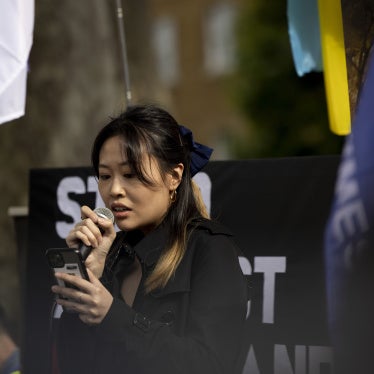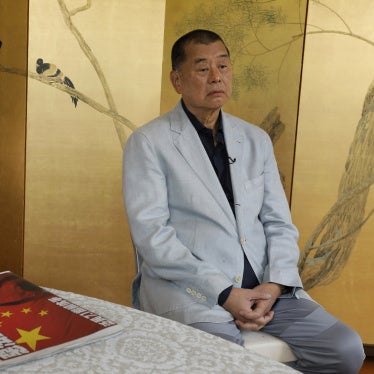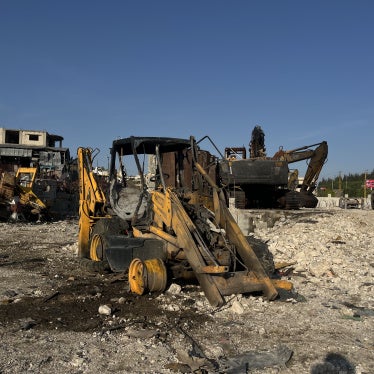(New York) – The Chinese government should immediately investigate shootings of Tibetan protesters by security forces, open Tibetan areas to international observers, and engage with representatives of the Tibetan community to address grievances and growing violence, Human Rights Watch said today.
Chinese security forces opened fire on protesters on January 23 and 24, killing at least two people and injuring several dozen more. Xinhua, the official Chinese news agency, confirmed that one protester, Norpa Yonten, was killed on January 23, after protests erupted in Luhuo Town (Draggo or Drango in Tibetan), and a second was killed after police opened fire in Seda Town (Serta in Tibetan) during protests on January 24. Both towns are in the Ganzi Tibetan Autonomous prefecture (Kardze in Tibetan) in Sichuan province, where tensions have been building following a growing number of protests and self-immolations there and in surrounding areas in recent months. Due to tight security imposed on the region, details of the sequence of events and nature of the protests, as well as the number of people wounded or detained, are difficult to verify. Some Tibetan exile groups report there may have been up to eight other deaths in the Luhuo and Seda incidents.
“In the current very volatile situation, it is especially important for Chinese forces to refrain from using disproportionate force,” said Sophie Richardson, China director at Human Rights Watch. “Measures that violate human rights and reinforce the population’s grievances won’t achieve China’s goal of ‘restoring order;’ however, they will aggravate and prolong the tragic cycle of violence that is taking hold.”
Protests have called for an end to religious repression, greater freedom, and the return of the Dalai Lama. Some Tibetans in these areas have refrained from participating in Lunar New Year celebrations out of respect for protestors who have set themselves on fire.
Xinhua reported that force was used in self-defense and to restore order in Luhou after a crowd “wielding knives and hurling stones…attacked a police station” and in Seda “after efforts involving persuasion and non-lethal weapon defense failed to disperse the mob,” and stated that 14 police were injured in the Seda incident. Tibetan sources in exile dispute these accounts. Even if protests devolve into violence, international law limits the use of force by states to that which is strictly necessary in order to protect life or to apprehend perpetrators of violent crimes.
Human Rights Watch said that the number of protests across the region appears to be rising rapidly, with other incidents reported this week in Sichuan and Qinghai provinces, which have large Tibetan populations. A protest involving an estimated 700 Tibetans took place following the latest self-immolation, that of Lobsang Jamyang, a former monk from Andou monastery (Andu in Tibetan) in Aba (Ngaba in Tibetan) in Sichuan Province, on January 14, 2012.
Three additional protests have taken place in Seda county between January 18 and 24, and one in Banma (Pema in Tibetan) county in Guoluo (Golog) prefecture, Qinghai province, on January 18. Several hundred Tibetans gathered in two large prayer processions to mourn the immolations in or near Aba town, Sichuan province, on January 23, and one procession turned into a protest after being blocked by police, and ended with dozens of arrests. Up to a thousand people are reported to have held a vigil at Tsodun monastery near Ma’erkang (Barkham in Tibetan) in Sichuan province, also on January 23, apparently to mourn the immolations.
Sixteen Tibetans, all current or former monks and nuns, have set themselves on fire since March 2011, four of them in January 2012. Twelve of the sixteen have died from their injuries. Most of the incidents have taken place in western Sichuan province, but immolations have now spread to places in the Tibet Autonomous Region on December 1, 2011, and in Qinghai Province on January 8, 2012. (See Appendix for full list of individual protests and their locations.)
Local support for the protesters who set themselves on fire has been growing and can be seen in the large numbers of people at their funerals. Several thousand Tibetans can be seen on a video of the funeral for Palden Choetso, a nun who died after setting herself on fire in Daofu Town (“Dawu” in Tibetan), Sichuan, on November 3, 2011. The protest after the self-immolation by Lobsang Jamyang in Aba, on January 14, began when several hundred local Tibetans attempted to prevent the removal of his body by security personnel.
After Sonam Wangyal (also known as Lama Soepa, referred to by Xinhua as Nyage Sonamdrugyu), a senior monk in his 40s, set himself on fire in Guoluo Tibet Autonomous Prefecture in Qinghai Province on January 8, 2012, up to 2,000 local Tibetans staged a protest demanding the release of his body, while others took part in another protest several days later as part of efforts to attend his funeral. The protests in Guoluo took place without incident.
The Chinese government should immediately investigate the response of security forces to the protests and open Tibetan areas to access by international media and observers, including United Nations rapporteurs, Human Rights Watch said. It should also send high-level officials to engage directly with Tibetan community representatives about the issues underlying the self-immolations and popular protests.
“As protests and immolations increase in number and spread geographically, the Chinese government must engage in serious discussion about Tibetans’ fundamental grievances,” Richardson said. “The Obama administration should make this issue a priority during Vice President Xi Jinping’s visit to the United States next month, urging restraint and the establishment of genuine dialogue.”







